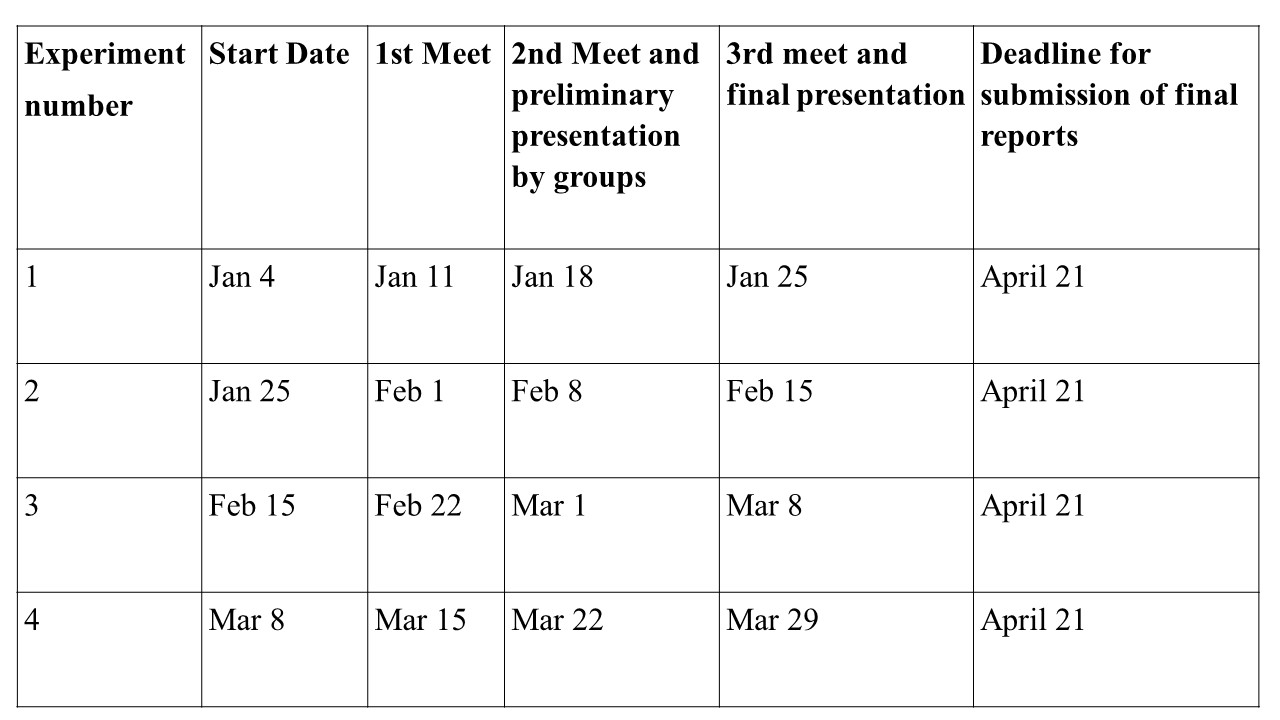Venue: JC Bose Lab
First two meetings: 4th, 5th Jan 2023 at 2:00 PM in Emmy Noether Seminar Room
Class Timings: 2:00 PM
Course Description:
- Students will perform four experiments, devoting approximately three weeks to each experiment (see below for the suggested timeline).
- Students will work in groups of two and are expected to devote 8 − 10 hours per week to each experiment.
- At the end of the allotted two week period for each experiment, students will give a short preliminary presentation.
- The students will make a final presentation at the end of the 3rd week.
- All experiments should be completed by March 31. Based on discussions and feedback received in the presentations, students can perform more experiments to improve on their work. They have to submit a final report describing briefly the theory behind the experiments, the experimental procedures, present the data and analysis and main conclusions. They are encouraged to comment on the challenges, open questions, and advice for future students.
- List of experiments:
Observe Brownian motion and estimate Avogadro’s number. In this experiment students will record tracks of Brownian particles, extract the diffusion constant and use the Einstein relation to determine the Avogadro number.
Create a gravity assisted soap film tunnel to study the formation of the von Karman vortex street in a quasi two-dimensional fluid and make measurements to quantify changes in its structure due to changes in flow rates and temperature.
Understand the working of a Van de Graaff, build one with easily available material, devise ways to estimate the charge, set up popular science demonstrations.
Understand the working of a cloud chamber, build one with easily available material to observe cosmic ray particle tracks. Students will record the tracks, obtain statistics on events, and try to identify different particles. They will also set up popular science demonstrations.
*For experiments 3,4, students are expected to do their own searches of literature and youtube video and figure out the simplest possible ways to build these setups and use them for demonstrations.
- Timeline for the Lab Course

Evaluation:
(40%) based on ability to innovate, find solutions to experimental challenges and eventually build a good set-up and present solid data analysis.
(30%) Written report and presentation for all the experiments.
(30%) Participation in discussions and ability of students to answer questions and demonstrate theoretical understanding of the experiments.
- Teacher: Abhishek Dhar